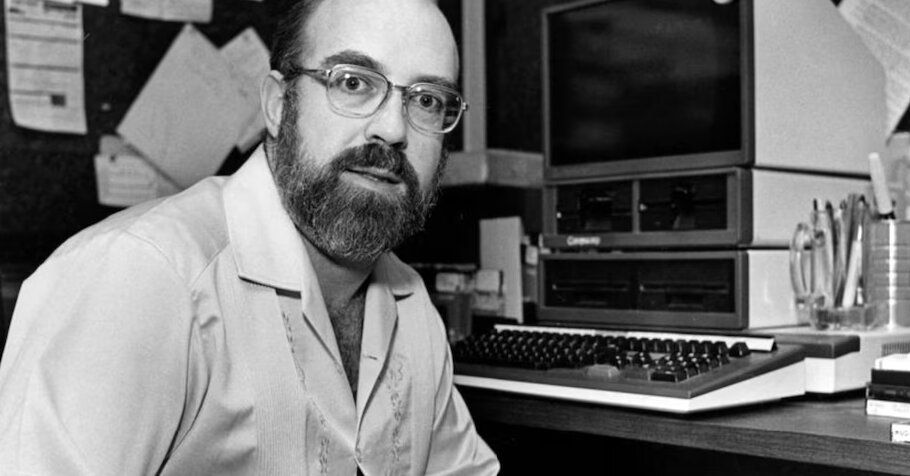Jon Franklin, an apostle of storytelling journalism whose own work won the first Pulitzer Prizes awarded for feature writing and explanatory journalism, died Sunday in Annapolis, Maryland. He was 82 years old.
His death, at a hospice, came less than two weeks after he fell at his home, said his wife, Lynn Franklin. He had also been treated for two years for esophageal cancer.
Author, professor, reporter and editor, Franklin championed the style of nonfiction that was celebrated as New Journalism but was actually old-fashioned storytelling, an approach that he believed still adhered to old journalism's standards of accuracy and objectivity. .
He imparted his thoughts on the subject in “Writing for a Story: Crafted Secrets of Dramatic Nonfiction” (1986), which became a practical guide for literary-minded journalists.
In 1979, Franklin won the first Pulitzer ever awarded for a feature film for her two-part series in The Baltimore Evening Sun titled “Mrs. “Kelly’s Monster.”
His vivid eyewitness account transported readers to an operating room where a surgeon's agonizing struggle to save the life of a woman whose brain was being crushed by a tangle of rogue blood vessels illuminated the wonders and margins of modern medicine.
He won his second Pulitzer, this time in the new explanatory journalism category, in 1985, for his seven-part series “The Mind Fixers,” also in The Evening Sun. Delving into the molecular chemistry of the brain and how neurons communicate, he profiled a scientist whose experiments with receptors in the brain could presage drug treatments and other alternatives to psychoanalysis.
Inspired by Mr. Franklin's own sessions with a psychologist, the series was adapted into a book, “Molecules of the Mind: The Brave New Science of Molecular Psychology” (1987), one of seven he wrote.
Barry L. Jacobs, a professor of neuroscience at Princeton, wrote in The New York Times Book Review that the author had approached his topic (that using medications to treat mental illness could make the world a saner place) “with a journalistic style.” agile, as well as with a touch of humor and a pinch of cynicism, often entertaining.” “Molecules” was among the Times’ Notable Books of the Year.
Mr. Franklin’s “Writing for Story” was not so much a sermonic bible for budding journalists who fancied themselves future John Steinbecks, Tom Wolfes and even Jon Franklins, but rather a challenging lesson plan on storytelling that, he wrote, took him three decades. to dominate.
“The reason we read stories is because we have developed a desire to understand the world around us,” he said in an interview for the Nieman Foundation at Harvard in 2004. “The best way to do this is through our own experiences, But if we read a good story, it's like living someone else's life without taking risks or spending time.”
Critics expressed concern that emphasizing style could mean sacrificing substance. Mr. Franklin objected.
Literary journalism, he insisted, “is not a threat to the fundamental values of honesty, precision and objectivity.” He cautioned, however, that if done correctly, literary journalism takes time and talent. “Not every story deserves it, nor can every reporter be trusted,” he wrote in American Journalism Review in 1996.
“Mrs. Kelly's Monster” was published in December 1978. That year, the Pulitzer Board had established a new prize category to recognize “a distinguished example of writing that prioritizes high literary quality and originality.” The board created the explanatory journalism award in 1984. Franklin was the first to win each of them.
Jon Daniel Franklin was born on January 13, 1942 in Enid, Oklahoma, son of Benjamin and Wilma (Winburn) Franklin. His father was an electrician whose work on construction sites in the Southwest often uprooted the family.
John aspired to be a scientist, but due to the transience of the family, he was educated primarily in what he called the “universal school for writers”: the novels of Fitzgerald and Hemingway and the stories of the Saturday Evening Post.
Bullied in gang fights as a minority white boy in largely Hispanic Santa Fe, he was given a battered Underwood typewriter by his father, who urged him to vent his hostility with his fingers instead of his fists.
In 1959, John dropped out of high school to join the Navy. He served for eight years as a naval journalist aboard aircraft carriers and then as an apprentice at All Hands magazine, a Pentagon publication where, he said, a demanding editor honed his talents.
He attended the University of Maryland under the GI Bill, graduating with a degree in journalism in 1970. He worked as a reporter and editor for The Prince Georges Post in Maryland before The Baltimore Evening Sun hired him as a rewriter in 1970. He won his Pulitzer covering science .
“I'm a science writer, but I don't write about science,” he said in the interview with Nieman. “I write about people. Science is just the stage.”
He left The Evening Sun in 1985 and returned to the University of Maryland, this time as a professor and chairman of the journalism department. He then ran the creative writing program at the University of Oregon for a time and accepted a writing job at The News & Observer in Raleigh.
Returning again to the University of Maryland, he was named to the first Merrill Chair in Journalism there in 2001. Gene Roberts, a faculty colleague who had been executive editor of The Philadelphia Inquirer and managing editor of The New York Times, praised the Mr. Franklin. as “one of the greatest practitioners and teachers of feature writing in all of journalism.” He retired as a teacher in 2010.
Mr. Franklin's marriage to Nancy Creevan ended in divorce. He married Lynn Scheidhauer in 1988. In addition to his wife, she is survived by two daughters, Catherine Franklin Abzug and Teresa June Franklin, from his first marriage.
Among his other books is “The Wolf in the Living Room: The Eternal Connection Between Humans and Dogs” (2000), in which he describes how Sam, the Franklins' pet poodle, woke the family when their house caught fire.
For a writer whose own surgical experience only came as long as having his thumb reattached after he severed it in a fall on the sidewalk, Mr. Franklin's story of the aneurysm “the monster” pressing on Edna Kelly's brain It was rich in detail and accessible images. The increasing pressure on the arterial wall, he wrote, was like “a tire about to burst, a balloon about to burst, a time bomb the size of a pea.”
Mrs. Kelly was willing to die rather than live with the monster. Her story was not about a miracle. But she begins and ends by invoking sustenance, without which life and miracles cannot exist:
Breakfast waffles prepared by the wife of Dr. Thomas Barbee Ducker, chief neurosurgeon at the University of Maryland Hospital. No coffee. His hands are shaking, Franklin wrote. When the surgery is over, what awaits Dr. Ducker are more medical challenges and a peanut butter sandwich that his wife had packed in a brown bag with Fig Newtons and a banana.
“Mrs. Kelly is dying,” Franklin wrote.
“The clock on the wall, near where Dr. Ducker sits, reads 1:43 and it's over.
“'It's hard to know what to do. We've been thinking about it for six weeks. But, you know, there are certain things… that's as far as you can go. I just do not know.'
“He puts the sandwich, the banana and the Fig Newtons on the table, in front of him, neatly, in the same way that the instrumentalist arranged the instruments.
“'It was a triple jeopardy,' he says finally, looking at his peanut butter sandwich the same way he looked at the x-rays. “It was a triple risk.”
“It's 1:43 and it's over.
“Dr. Ducker grimly bites into the sandwich. You must continue. The monster won.”










